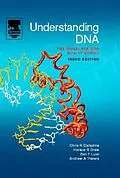The functional properties of any molecule are directly related to, and affected by, its structure. This is especially true for DNA, the molecular that carries the code for all life on earth. The third edition of Understanding DNA has been entirely revised and updated, and expanded to cover new advances in our understanding. It explains, step by step, how DNA forms specific structures, the nature of these structures and how they fundamentally affect the biological processes of transcription and replication. Written in a clear, concise and lively fashion, Understanding DNA is essential reading for all molecular biology, biochemistry and genetics students, to newcomers to the field from other areas such as chemistry or physics, and even for seasoned researchers, who really want to understand DNA. - Describes the basic units of DNA and how these form the double helix, and the various types of DNA double helix - Outlines the methods used to study DNA structure - Contains over 130 illustrations, some in full color, as well as exercises and further readings to stimulate student comprehension
Autorentext
Chris Calladine is Professor of Structural Mechanics at the University of Cambridge. In addition to researching aspects of structural engineering, he has applied the methods of structural mechanics to the study of flagella and DNA.
Inhalt
An Introduction to Molecular Biology for Non-Scientists Why a Helix? Different Kinds of Double Helix Twisting and Curving Curving in Three Dimensions DNA Supercoiling The Assembly of DNA intor Chromosomes Specific DNA-Protein Interactions Methods Used to Study the Structure of DNA DNA in Disease, Diagnostics and Medicine Cytosine Methylation and DNA Epigenetics
Appendix 1: Notes on the Derivation of Some Technical Terms 2: The Chemical Theory of Base-stacking Interactions in DNA 3: How to modify Gene Expression by means of Anti-sense Oligonucleotides, Ribozymes or si-RNA
